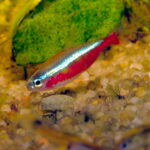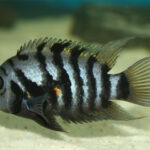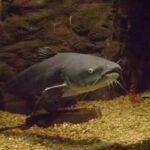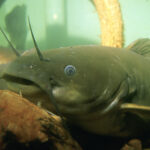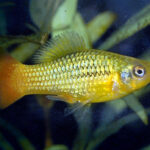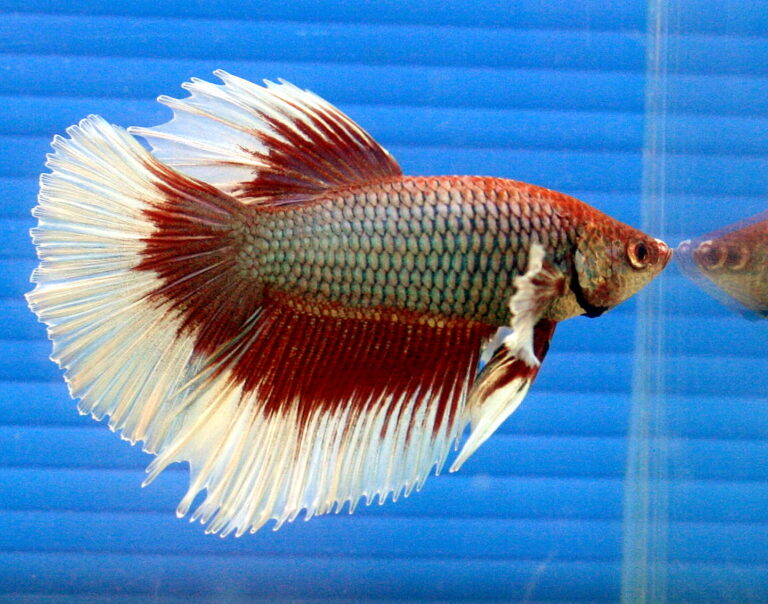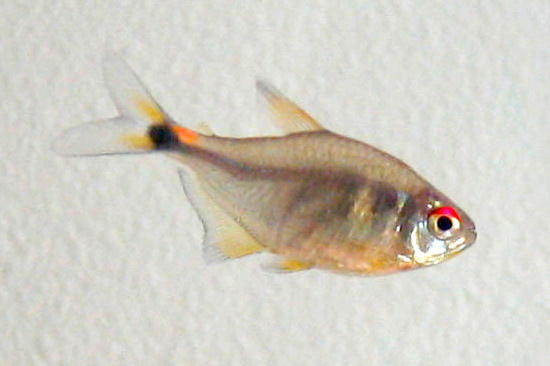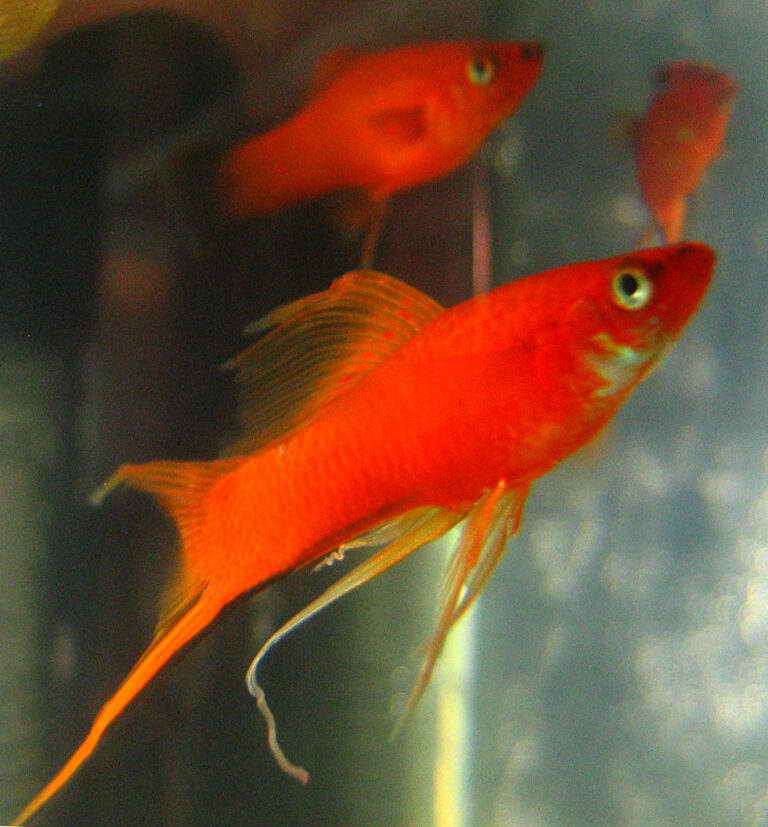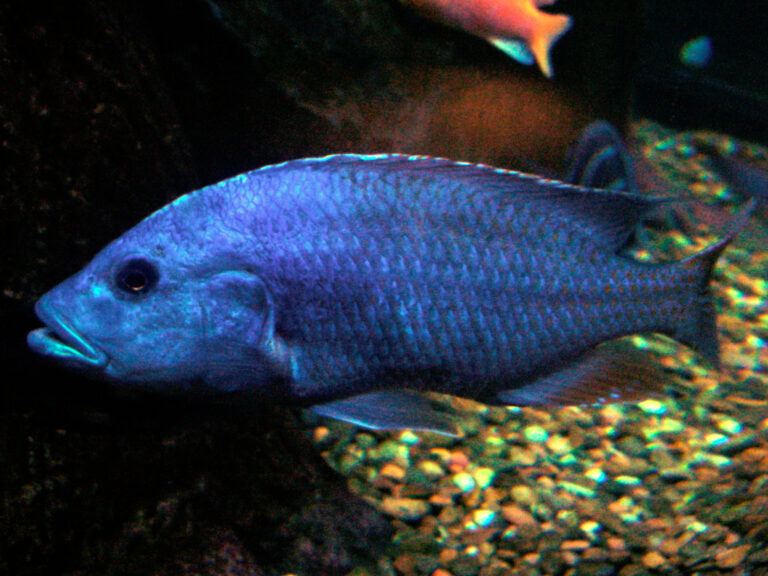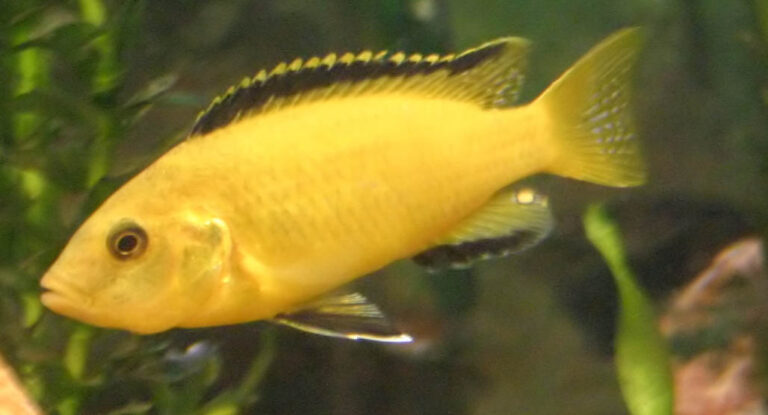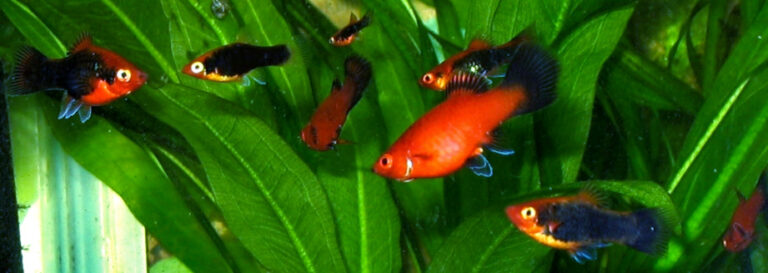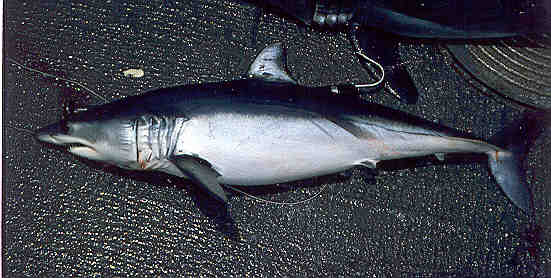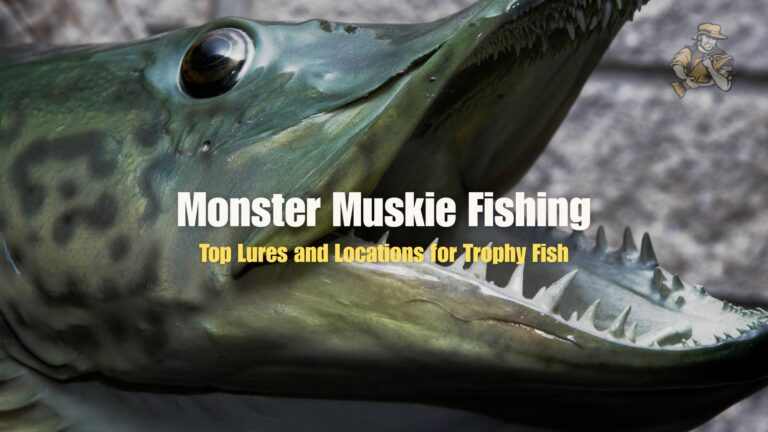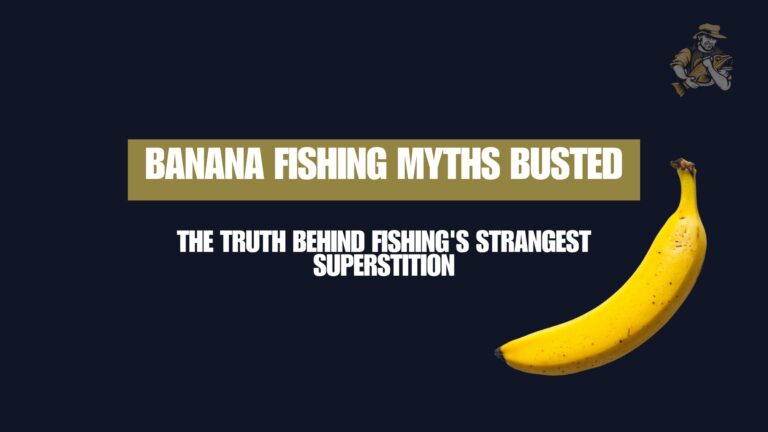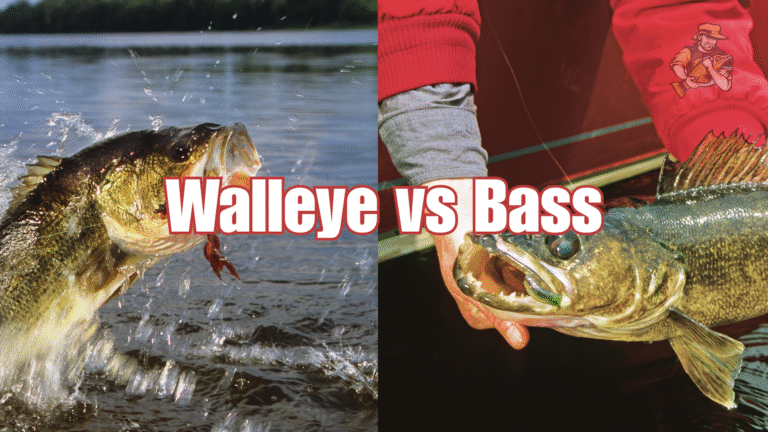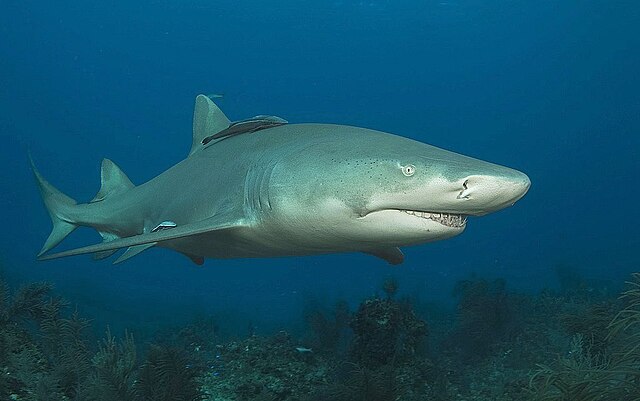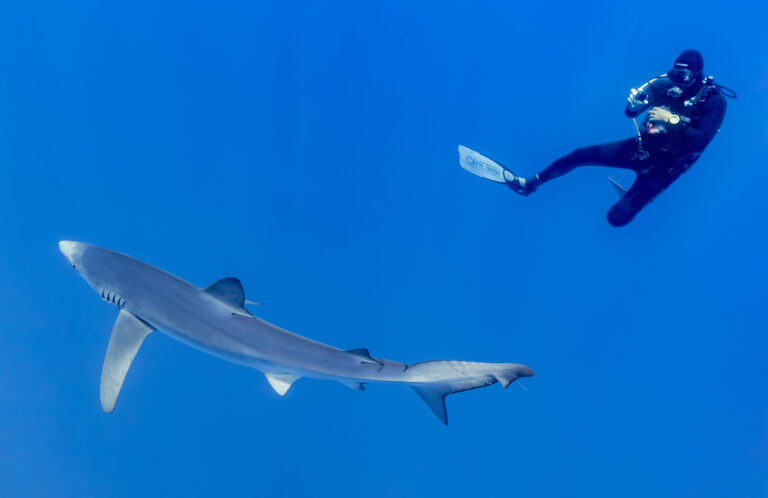Cichlid
By Ryan Maron | Last Modified: June 6, 2025
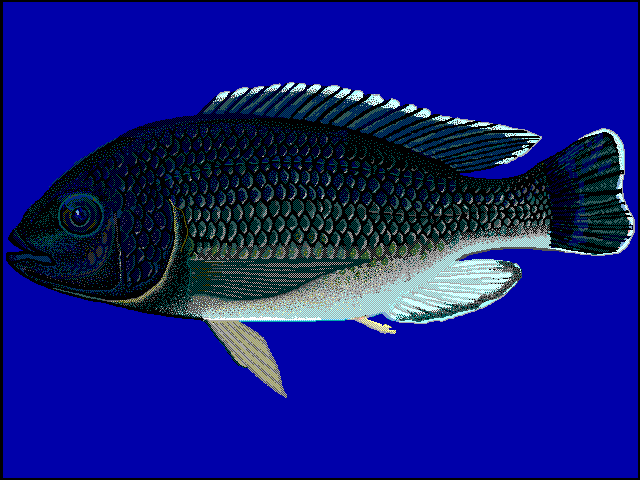
Cichlids represent one of the most diverse and fascinating families of freshwater fish, encompassing over 1,700 species distributed across tropical and subtropical regions worldwide. These remarkable fish, scientifically classified within the family Cichlidae, have captured the attention of marine biologists, aquarists, and evolutionary researchers due to their extraordinary adaptability and complex social behaviors. From the colorful African rift lake species to the robust Central American varieties, cichlids demonstrate an unparalleled range of ecological niches and feeding strategies that have made them keystone species in freshwater ecosystems globally. Their significance extends beyond ecological importance, as many cichlid species serve as vital protein sources for local communities and have become cornerstones of the global aquarium trade, generating substantial economic value while contributing to our understanding of evolutionary biology and adaptive radiation.
| Feature | Details |
|---|---|
| Common Name | Cichlid |
| Scientific Name | Cichlidae (Family) |
| Family | Cichlidae |
| Typical Size | 2.5-80 cm (1-31 inches), 10g-4.5kg |
| Habitat | Freshwater lakes, rivers, streams |
| Diet | Omnivorous, highly variable |
| Distribution | Africa, Central/South America, Asia |
| Conservation Status | Variable (Least Concern to Critically Endangered) |
Taxonomy & Classification
The family Cichlidae belongs to the order Perciformes, representing one of the largest families of vertebrates with over 1,700 described species and potentially thousands more awaiting scientific classification. Cichlids are subdivided into several major lineages based on geographical distribution and evolutionary relationships. The primary groups include African cichlids, which encompass the spectacular diversity found in the East African Rift Lakes (Malawi, Tanganyika, and Victoria), West African riverine species, and Madagascar endemics. Neotropical cichlids from Central and South America constitute another major radiation, including popular aquarium species like angelfish (Pterophyllum), discus (Symphysodon), and oscars (Astronotus).
Modern phylogenetic studies utilizing molecular markers have revealed that cichlid evolution represents one of the most rapid adaptive radiations in the animal kingdom. The East African lake cichlids alone have diversified into hundreds of species within the past few million years, developing specialized feeding apparatus, breeding behaviors, and ecological niches. Taxonomic classification within Cichlidae continues to evolve as researchers discover new species and refine evolutionary relationships through advanced genetic sequencing techniques.
The remarkable diversity within this family is reflected in their morphological variation, from the diminutive shell-dwelling Lamprologus species of Lake Tanganyika measuring just 2.5 centimeters to the massive Central American cichlids exceeding 80 centimeters in length. This extraordinary range demonstrates the evolutionary plasticity that has made cichlids a model system for studying speciation, adaptive radiation, and evolutionary ecology.
Physical Description
Cichlid morphology exhibits remarkable diversity, reflecting their adaptive radiation across numerous ecological niches. Most cichlids possess a laterally compressed body plan with a single dorsal fin that extends along most of the back, typically featuring both spiny and soft-rayed portions. The distinctive pharyngeal jaw apparatus represents one of their most significant anatomical innovations, consisting of modified gill arch bones that function as a secondary set of jaws for processing food. This pharyngeal mill allows cichlids to exploit diverse food sources while maintaining their primary oral jaws for prey capture.
Coloration patterns in cichlids span the entire visible spectrum, with many species displaying brilliant blues, reds, yellows, and metallic sheens that rival tropical marine fish. Sexual dimorphism is pronounced in many species, with males typically exhibiting more vibrant colors and elaborate fin extensions during breeding periods. African rift lake cichlids demonstrate particularly striking color polymorphisms, with some species displaying dozens of distinct color morphs that may represent incipient speciation events.
Body size variation within the family is extraordinary, ranging from tiny Lamprologus multifasciatus at 2.5 centimeters to giant Central American species like Parachromis dovii reaching over 80 centimeters. Fin morphology varies considerably based on ecological specialization, with rock-dwelling species developing enlarged pectoral fins for maneuvering in crevices, while open-water planktivores possess streamlined profiles and forked caudal fins for efficient swimming. Scale patterns, head shapes, and mouth positions further reflect specialized feeding strategies, from the downturned mouths of algae scrapers to the protrusible jaws of invertebrate pickers.
Habitat & Distribution
Cichlids occupy freshwater habitats across tropical and subtropical regions, with their greatest diversity concentrated in Africa and the Neotropics. The East African Rift Lakes contain the highest cichlid species density on Earth, with Lake Malawi alone hosting over 800 endemic species. These ancient lakes provide stable environments that have fostered extraordinary speciation events, creating natural laboratories for evolutionary research. Lake Tanganyika, the oldest of the rift lakes at approximately 10 million years, contains the most phylogenetically diverse cichlid assemblages, including primitive lineages that reveal early evolutionary pathways.
African cichlids extend beyond the famous rift lakes to occupy rivers, floodplains, and smaller lakes throughout the continent. The Congo River system supports numerous endemic species adapted to flowing water conditions, while West African coastal rivers harbor distinct cichlid communities. Madagascar’s cichlid fauna represents an ancient lineage with unique evolutionary characteristics, including several endemic genera found nowhere else on Earth.
Neotropical cichlids range from southern Texas through Central America and across most of South America, occupying diverse habitats from high-altitude lakes to lowland river systems. The Amazon basin supports remarkable cichlid diversity, with species adapted to everything from acidic blackwater streams to alkaline floodplain lakes. Central American cichlids have colonized volcanic crater lakes, developing endemic species flocks that parallel African lake radiations on a smaller scale.
Environmental parameters vary dramatically across cichlid habitats, from the highly alkaline, mineral-rich waters of African rift lakes to the soft, acidic conditions of South American blackwater systems. Water temperatures typically range from 22-30°C in most natural habitats, though some high-altitude species tolerate cooler conditions. This habitat diversity has driven the evolution of physiological adaptations that allow different cichlid species to thrive in drastically different water chemistry conditions.
Diet & Feeding Behavior
Cichlid feeding strategies represent one of the most diverse arrays found within any fish family, spanning the complete spectrum from strict herbivores to apex predators. This dietary diversity reflects their evolutionary success and adaptive radiation into numerous ecological niches. Algae-grazing species possess specialized scraping teeth and elongated intestines for processing plant material, while piscivorous species develop sharp, pointed teeth and shorter digestive tracts optimized for processing animal protein.
Planktivorous cichlids have evolved sophisticated feeding mechanisms for capturing microscopic organisms, including specialized gill rakers that function as filtering apparatus. These species often form large aggregations in open water zones, coordinating their feeding activities to maximize plankton capture efficiency. Invertebrate specialists demonstrate remarkable precision in extracting small prey items from complex substrates, using protrusible jaws to pluck insects, worms, and crustaceans from rock crevices and vegetation.
Scale-eating cichlids represent one of the most unusual feeding specializations, with species like Perissodus microlepis from Lake Tanganyika developing asymmetrical mouths for efficiently removing scales from other fish species. Mollusk-crushing specialists possess powerful pharyngeal mills capable of processing hard-shelled prey, while some species have evolved to feed exclusively on the eggs and fry of other cichlids, developing complex behavioral strategies for accessing nesting sites.
Feeding behavior often correlates with complex social structures, as many cichlid species exhibit territorial defense of feeding areas or engage in cooperative foraging strategies. Some species demonstrate remarkable behavioral flexibility, switching between different feeding modes based on seasonal prey availability or competitive pressure. The pharyngeal jaw innovation allows cichlids to process diverse food types efficiently while maintaining their ability to capture new prey items, contributing significantly to their ecological success and evolutionary diversification.
Behavior & Adaptations
Cichlid behavior encompasses some of the most complex social systems found in freshwater fish, rivaling marine species in their sophistication and diversity. Territorial behavior represents a fundamental aspect of cichlid ecology, with many species establishing and defending specific areas for feeding, breeding, or shelter. Territory size and defense intensity vary dramatically based on resource availability, population density, and species-specific requirements. Rock-dwelling cichlids often maintain small, highly defended territories around cave sites, while open-water species may establish larger, less intensively guarded feeding areas.
Social hierarchies within cichlid communities create complex dominance structures that influence access to resources, breeding opportunities, and habitat selection. Alpha individuals typically display enhanced coloration, larger body size, and more aggressive behavior patterns, while subordinate fish often adopt cryptic coloration and submissive postures to avoid confrontation. These hierarchical systems can shift rapidly based on environmental changes, reproductive status, or competitive interactions with neighboring species.
Cooperative behaviors have evolved in several cichlid lineages, including coordinated territory defense, communal brood care, and information sharing about food resources or predator threats. Some species engage in cleaning symbioses, removing parasites and dead tissue from larger fish species in exchange for protection and feeding opportunities. Schooling behavior occurs primarily in planktivorous species and juveniles of larger species, providing protection from predators through increased vigilance and confusion effects.
Communication systems in cichlids involve complex combinations of visual displays, chemical signals, and acoustic communication. Color changes serve multiple functions, from species recognition and mate selection to threat displays and submission signals. Many species produce sounds through specialized sonic muscles or pharyngeal jaw movements, particularly during courtship and territorial disputes. These sophisticated behavioral adaptations contribute significantly to cichlid ecological success and their ability to coexist in high-diversity communities.
Reproduction & Life Cycle
Cichlid reproductive strategies demonstrate extraordinary diversity, ranging from simple substrate spawning to highly complex mouthbrooding systems with extended parental care. Substrate spawners typically deposit eggs on carefully cleaned surfaces such as rocks, logs, or plant leaves, with both parents participating in nest preparation, egg guarding, and fry protection. These species often exhibit elaborate courtship rituals involving synchronized swimming patterns, color displays, and territory preparation that can last several days or weeks.
Mouthbrooding cichlids have evolved sophisticated reproductive strategies where one parent, typically the female, incubates eggs and protects young fry within their oral cavity. This reproductive mode provides enhanced protection from predators and environmental fluctuations but limits the number of offspring that can be produced. Maternal mouthbrooders dominate African rift lake cichlid communities, while biparental mouthbrooding occurs in certain substrate-spawning lineages.
Spawning seasonality varies considerably based on geographic location and environmental conditions. Tropical species may breed continuously throughout the year when conditions remain favorable, while temperate and high-altitude populations often exhibit distinct breeding seasons correlated with temperature cycles and food availability. Some species demonstrate remarkable reproductive flexibility, adjusting clutch sizes, spawning frequency, and parental investment based on environmental conditions and population density.
Parental care extends well beyond the typical fish reproductive pattern, with many cichlid species providing protection, feeding assistance, and behavioral guidance to their offspring for weeks or months after hatching. Advanced parental behaviors include leading fry to feeding areas, teaching predator recognition, and defending mobile schools of juvenile fish. Some species produce specialized mucus secretions that provide additional nutrition for developing fry, while others engage in sophisticated communication systems to coordinate family group movements and activities.
Predators & Threats
Cichlids face diverse predation pressure throughout their life cycles, with threats varying significantly based on habitat type, body size, and behavioral ecology. Juvenile cichlids are particularly vulnerable to predation from a wide range of species, including larger conspecifics, other fish families, aquatic invertebrates, and aerial predators such as birds and insects. Adult cichlids encounter fewer predators due to their size and defensive capabilities, but still face threats from apex predators including large catfish, predatory cichlids, crocodilians, and fishing birds.
Natural predator-prey relationships have driven the evolution of numerous defensive adaptations in cichlids, including schooling behavior, cryptic coloration, aggressive territorial defense, and sophisticated alarm systems. Many species have developed the ability to rapidly change coloration to match their surroundings or signal alarm states to conspecifics. Group living provides enhanced predator detection and dilution effects that reduce individual predation risk.
Human activities represent increasingly significant threats to cichlid populations worldwide. Habitat destruction through dam construction, agricultural development, and urban expansion has eliminated or degraded critical spawning and feeding areas for numerous species. Water pollution from agricultural runoff, industrial discharge, and domestic waste creates conditions that favor invasive species while stressing native cichlid communities.
Overfishing presents severe challenges for many cichlid populations, particularly in African lakes where these fish serve as primary protein sources for local communities. Commercial and subsistence fishing pressure has led to population declines in several economically important species. Additionally, the international aquarium trade creates harvesting pressure on wild populations of colorful or rare species, though captive breeding programs have reduced wild collection for many popular aquarium species. Climate change impacts, including altered precipitation patterns, temperature increases, and extreme weather events, pose emerging threats to cichlid populations adapted to specific environmental conditions.
Conservation Status
Conservation status within the cichlid family varies dramatically, reflecting their enormous diversity and different levels of human impact across their range. The International Union for Conservation of Nature (IUCN) has assessed hundreds of cichlid species, with classifications ranging from Least Concern to Critically Endangered and several species already confirmed extinct. African rift lake cichlids face particular conservation challenges due to their high levels of endemism and restricted distributions, making entire species vulnerable to localized threats.
Lake Victoria has experienced one of the most severe freshwater biodiversity crises in recorded history, with an estimated 200-300 endemic cichlid species driven to extinction following the introduction of Nile perch in the 1950s. This ecological disaster demonstrates the vulnerability of cichlid communities to invasive species and serves as a cautionary example for conservation efforts in other cichlid habitats. Recovery programs focusing on predator control and habitat restoration have shown limited success in reestablishing some native species.
Several Central American cichlid species face critical conservation challenges due to habitat destruction and water diversion projects. The devil’s hole pupfish situation has parallels in isolated cichlid populations inhabiting crater lakes and small watersheds where entire species depend on single water bodies for survival. Conservation efforts for these species require comprehensive watershed protection and careful management of water resources.
Positive conservation developments include the establishment of protected areas around critical cichlid habitats, international cooperation on trans-boundary lake management, and successful captive breeding programs that maintain genetic diversity of threatened species. The aquarium trade has contributed to conservation efforts by developing sustainable breeding programs and reducing collection pressure on wild populations. Community-based conservation initiatives that provide alternative livelihoods for local communities while protecting cichlid habitats have shown promise in several regions, though long-term success requires continued support and monitoring.
Human Interaction
Human interactions with cichlids span thousands of years, with archaeological evidence suggesting these fish served as important protein sources for ancient civilizations around African lakes and Central American waterways. Today, cichlids support major fisheries throughout their range, providing critical nutrition and economic opportunities for millions of people. Lake Malawi’s cichlid fisheries alone support over 50,000 fishermen and contribute substantially to regional food security, though sustainable management practices are essential to prevent overexploitation.
The global aquarium trade has transformed cichlids into one of the most economically valuable freshwater fish groups, generating hundreds of millions of dollars annually through commercial breeding, wholesale distribution, and retail sales. Popular species like angelfish, various Betta fish varieties, and African rift lake cichlids have become cornerstones of the ornamental fish industry. Advanced breeding techniques have produced numerous color morphs and fin variations that command premium prices among aquarium enthusiasts.
Aquaculture development using cichlid species has expanded significantly in recent decades, with tilapia species (members of the cichlid family) becoming the second-most farmed fish globally. These operations provide affordable protein sources while reducing pressure on wild populations, though escaped farm fish can pose threats to native ecosystems. Integrated aquaculture systems that combine cichlid production with agriculture have shown promise for sustainable development in tropical regions.
Scientific research involving cichlids has contributed enormously to our understanding of evolution, behavior, and ecology. These fish serve as model organisms for studying speciation, sexual selection, parental care, and community ecology. Their rapid evolutionary rates and diverse adaptations make them valuable subjects for research on adaptive radiation and evolutionary developmental biology. Educational programs featuring cichlids help promote awareness of freshwater biodiversity conservation while inspiring interest in aquatic biology among students and the general public.
Interesting Facts
Cichlids possess one of the most sophisticated parental care systems in the fish world, with some species demonstrating behaviors that rival those of birds and mammals. Certain South American cichlids produce specialized mucus secretions that serve as food for their fry, similar to mammalian milk production. Parents of some species have been observed teaching their offspring to recognize different food types and predator threats through complex behavioral demonstrations.
The pharyngeal jaw system in cichlids represents a key evolutionary innovation that has enabled their remarkable dietary diversity. This secondary jaw apparatus can evolve independently from the primary oral jaws, allowing cichlids to specialize simultaneously for prey capture and food processing. Some species can generate crushing forces exceeding 500 Newtons with their pharyngeal jaws, sufficient to break open tough mollusk shells.
African rift lake cichlids exhibit some of the fastest rates of evolutionary change documented in vertebrates, with new species potentially arising within hundreds rather than thousands of years. Lake Malawi cichlids show evidence of rapid evolution in response to changing lake levels during recent geological periods, with some species radiations occurring within the past 10,000 years.
Several cichlid species demonstrate remarkable problem-solving abilities and tool use behaviors. Some species use leaves, rocks, or other objects to create more effective nesting sites, while others have learned to exploit human activities for feeding opportunities. Research has documented cichlids using cooperative hunting strategies to capture prey items too large for individual fish to handle successfully.
Color vision in many cichlid species extends into ultraviolet wavelengths, allowing them to perceive patterns and signals invisible to human observers. This enhanced visual capability plays crucial roles in species recognition, mate selection, and foraging behavior. Some species can rapidly alter their coloration in response to social situations, environmental changes, or emotional states, demonstrating sophisticated neurological control over pigmentation systems.
Frequently Asked Questions
What makes cichlids different from other freshwater fish families?
Cichlids are distinguished by their unique pharyngeal jaw apparatus, which functions as a secondary set of jaws for food processing, and their highly developed parental care behaviors. Unlike most fish species that abandon their eggs after spawning, cichlids actively guard, care for, and often feed their offspring for extended periods. Their rapid evolutionary rates and tendency toward speciation have created remarkable diversity within relatively confined geographical areas, particularly in African rift lakes.
Can different cichlid species interbreed and produce viable offspring?
Many closely related cichlid species can hybridize, particularly within species flocks from the same lake or river system. However, reproductive isolation mechanisms have evolved to prevent extensive hybridization in natural environments, including behavioral differences, spawning timing variations, and genetic incompatibilities. In aquarium settings, hybridization occurs more readily due to confined spaces and limited mate choice, though hybrid offspring may have reduced fitness or fertility.
Why are African rift lake cichlids so colorful compared to other freshwater fish?
The exceptional coloration in African rift lake cichlids results from intense sexual selection pressure combined with species recognition requirements in highly diverse communities. Bright colors serve multiple functions including mate attraction, species identification, and territorial signaling. The clear, mineral-rich waters of rift lakes provide excellent visibility for color-based communication, while the high species density creates strong selection pressure for distinctive visual signals to prevent interbreeding between closely related species.
How do mouthbrooding cichlids manage to breathe while carrying eggs and fry?
Mouthbrooding cichlids have evolved several physiological adaptations to manage respiration during the brooding period. They increase their gill ventilation rate and often position eggs and fry in specific areas of the oral cavity that minimize interference with water flow. During critical periods, brooding parents may temporarily release their brood to feed or obtain better water flow before recollecting them. The brooding period typically involves reduced feeding activity, allowing parents to dedicate more oral cavity space to their offspring while minimizing their own metabolic demands.
Conclusion
Cichlids represent one of the most remarkable success stories in freshwater fish evolution, demonstrating how adaptive radiation can generate extraordinary diversity within relatively short geological timeframes. Their complex behaviors, sophisticated parental care systems, and specialized feeding strategies have enabled them to colonize diverse aquatic habitats while maintaining crucial ecological roles as both predators and prey species. As human activities continue to impact freshwater ecosystems globally, cichlids serve as important indicators of environmental health while their conservation requirements highlight the urgent need for comprehensive watershed protection and sustainable fisheries management practices.
Share The Article:
More Fish Species:
-
Half Moon Betta
The Half Moon Betta (Betta splendens) represents one of the most distinctive and sought-after varieties within the Siamese fighting…
-
Head and Tail Light Tetra
The Head and Tail Light Tetra (*Hemigrammus ocellifer*) stands as one of South America’s most distinctive characin species, instantly…
-
Red Swordtail
The Red Swordtail stands as one of the most recognizable and cherished freshwater aquarium fish in the world. Known…
-
Electric Blue Cichlid
The Electric Blue Cichlid stands as one of the most striking and sought-after freshwater fish species in the aquarium…
-
Yellow Lab Cichlid
The Yellow Lab Cichlid (*Labidochromis caeruleus*) stands as one of Africa’s most recognizable freshwater fish species, distinguished by its…
-
Wagtail Platy
The Wagtail Platy stands as one of the most distinctive and beloved freshwater aquarium fish, renowned for its elegant…
Discover
-
Shortfin Mako Shark
The Shortfin Mako Shark stands as one of the ocean’s most remarkable predators, combining exceptional speed with sophisticated hunting…
-
Great White Shark
The Great White Shark (*Carcharodon carcharias*) stands as one of the ocean’s most formidable apex predators, commanding respect and…
-
Monster Muskie Fishing: Top Lures and Locations for Trophy Fish
There’s nothing – and I mean absolutely nothing – that compares to the heart-stopping moment when a monster muskie…
-
Banana Fishing Myths Busted: The Truth Behind Fishing’s Strangest Superstition
Ask any hardcore angler about bringing a banana on their boat, and you might get a reaction stronger than…
-
Walleye vs Bass: Different Strategies for Freshwater Predators
I still remember my first dedicated walleye trip back in 2009. After fifteen years of chasing mostly bass, I…
-
Bigeye Thresher Shark
The Bigeye Thresher Shark represents one of the ocean’s most extraordinary predators, distinguished by its dramatically elongated tail fin…
Discover
-
Green Terror Cichlid
The Green Terror Cichlid stands as one of South America’s most formidable and visually striking freshwater fish species, commanding…
-
Marigold Swordtail
The Marigold Swordtail (Xiphophorus hellerii var. marigold) stands as one of the most vibrant and sought-after color variants within…
-
Lemon Shark
The Lemon Shark (*Negaprion brevirostris*) represents one of the most scientifically studied and ecologically significant predators in coastal marine…
-
Blue Shark
The Blue Shark (Prionace glauca) represents one of the ocean’s most accomplished travelers, traversing entire ocean basins in epic…
-
Largemouth Bass
The Largemouth Bass, scientifically known as *Micropterus salmoides*, stands as one of North America’s most iconic freshwater gamefish and…
-
How to Fish for Bluegill: 2025 Complete Guide
Bluegill might not be the biggest fish in the pond, but they sure make up for it in fight…


